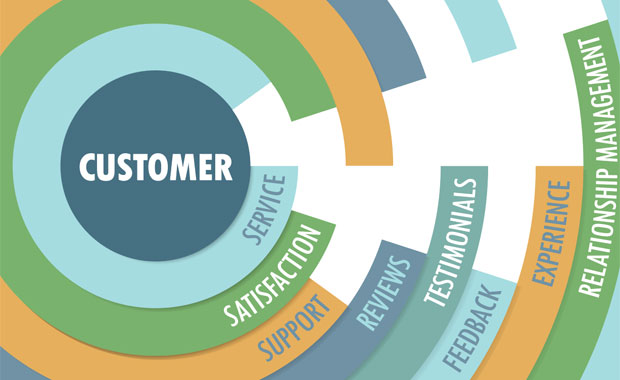Companies are run by people. Some do a great job of putting the customer first and growing, which ultimately rewards investors. Others don’t. Some first focus on investors and numbers, simply not caring about or taking care of the customer. That approach can have a serious and long-term negative impact on the company.
Following are several examples of what some companies are doing right and wrong.
Stellar Customer Care
The Ritz-Carlton Hotel is exceptional. It has a long history of training its workers to present themselves as ladies and gentlemen serving ladies and gentlemen. If a customer should ever have a problem, each employee is authorized to do whatever it takes to make the customer happy — even if it means spending money. The reason is simple. A happy customer is an ongoing customer. That philosophy has worked for Ritz-Carlton over the long term.
LL Bean is a clothing company that has been around for decades. It has a few retail stores, but most of its business is done online or through its 800 number. It does business the right way. There is always a real person available to help you anytime. They seldom do anything wrong, and when they do, they are always there, live, to make things right, keeping the customer very happy the good old fashioned way.
There are many companies that do an excellent job and other companies could learn from their examples. So, if treating the customer with respect and having top quality is the secret of success for some companies, why do other companies treat their customers with disrespect?
Poor Customer Care
LA Fitness has good health clubs, but it does not seem to care about the customer. I was a member and liked it, so I signed up my son as well. A few years later, I learned that he had canceled the membership and no longer went there. I checked my credit card statement and saw that I had been charged the whole time — and, in fact, the fee had more than doubled.
When I called about the problem, LA Fitness saw there had been no club usage for years and agreed to stop the membership. However, it could not find the original cancellation request, so it refused to refund several thousand dollars of unused membership fees to me. That was a mistake from my customer viewpoint.
LA Fitness forced a customer to pay for its own employee’s failure to submit the cancellation request for processing. Don’t you think if a customer doesn’t use a membership for a long time, but continues to be charged, that a company at least should contact the member to verify the subscription? That non-caring attitude caused LA Fitness to fail my customer service test.
Wells Fargo is another example of poor service. I’m not talking about the big money scandal of last year. I’m talking about the way the company handles customer problems today. I have used its website to set up automatic payments for regular bills. I have done so for many years. I started with Wachovia before it was acquired. At the end of 2017, I stopped making auto payments to Blue Cross Blue Shield because it had stopped serving Georgia.
Last week I got an email from Wells Fargo saying that it had sent the monthly payment once again. When I called, I was told that I had stopped the payment for December only. No, I had intended to stop it permanently, I said. The procedure must not have been clear on the website.
Instead of taking responsibility for solving the problem, Wells Fargo said there was nothing it could do. Now I have to wait several weeks to get a few thousand dollars back from Blue Cross. The lack of clarity on the Wells Fargo website caused me a great deal of aggravation. Wells Fargo did nothing for its customer. Banking with Wachovia was a much better experience — Wells Fargo failed the customer service test.
Showing Improvement
Comcast is an example of a company that used to drive me nuts but over time has grown and has changed its ways. Today it is a much better-run company than ever before. Ten years ago, it was a much smaller cable television provider that focused only on the investor, not the customer.
It has grown and matured over the last decade, and Comcast now is a great example of how a company should operate. It still focuses on the investor, but it also focuses on the customer, trying to make sure everyone is happy — and it is doing a better job than ever.
So, there are three kinds of companies: good companies, bad companies, and those that were not so hot before but have been improving rapidly. So, where does your company fit into this model? This is an important question.
I’m sure you can come up with your own list of companies that do things right and wrong. Which list would your company fall into? If you want to keep growing, you must be on the right list.
Lesson From My Father
When I was growing up, my father owned a small business — a meat market. I learned the rules of the retail road from him. He always said the customer is right, even when the customer is wrong. He said you can win the argument, but you will lose the customer. So, bite your tongue and always, always put the customer first. That way the customer will keep coming back.
That was a great lesson I have never forgotten. Focus on the customer. Without your customers, you have no business. That is a lesson that every company, every executive and every worker should take to heart — especially when there is competition and choice. Remember, like Ritz-Carlton tells its employees, “we are ladies and gentlemen, serving ladies and gentlemen.” That’s a pretty good rule to live by, don’t you think?

























































